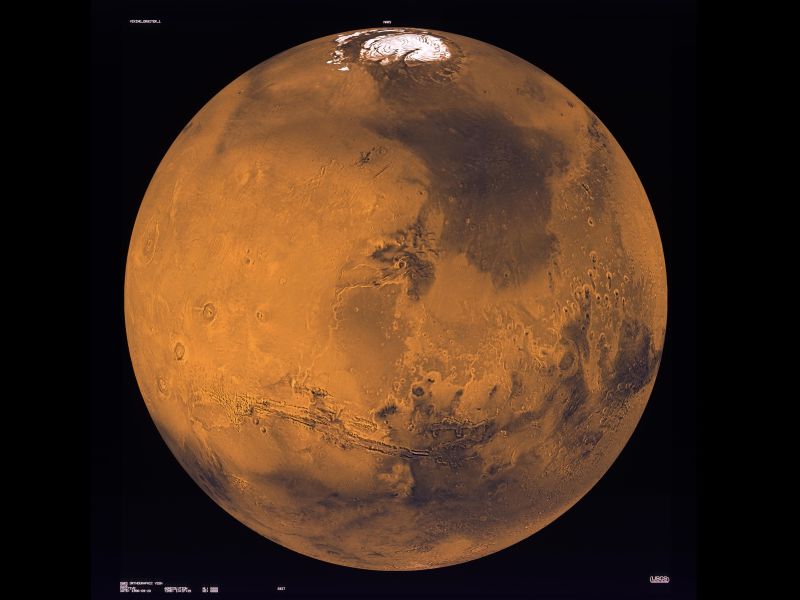Mars
This task is about how knowledge can change over time.

Image source: NASA
|
When early astronomers started looking at Mars using their primitive telescopes they could see that the planet had areas of dark colour that seemed to change size as time passed. It was thought these dark areas were plants that grew in the warmer times of the year and then died off in the winter, much like on Earth. They could also see dark lines on the surface. Some people thought these dark lines were canals and thought this proved that there must be some form of intelligent life on Mars to have made them. Most scientists no longer believe this.
|

